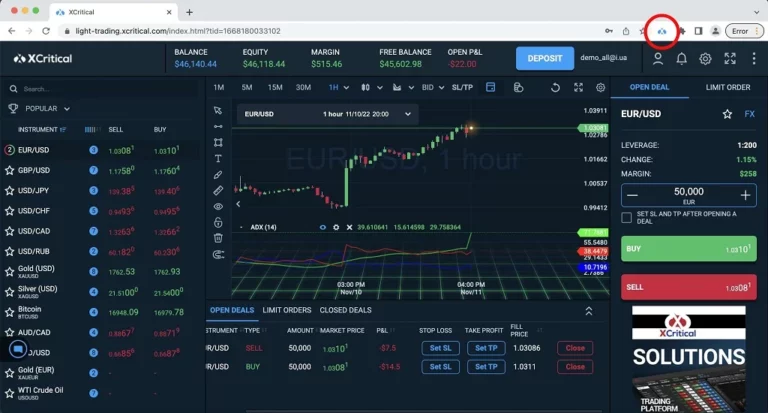Content
- What is the importance of diversification in investing?
- Mastering the Money Game: Taming the Procrastination Monster in Investment!
- How can investors stay updated with the latest trends in both fundamental and technical analysis?
- The Battle of Strategies: Fundamental Analysis vs Technical Analysis – Which Triumphs for Investors?
By focusing on the former, fundamental traders seek to understand what might be seen as the true value of an asset. The debate between the importance of fundamental and technical analyses in investment decision-making is long-standing and nuanced. https://www.xcritical.com/ Both approaches offer important perspectives and are more or less valuable in different contexts.
What is the importance of diversification in investing?
This approach can help traders protect their capital and minimize potential losses in volatile market conditions. One of the primary benefits of fundamental analysis is its long-term perspective, which aligns well with buy-and-hold strategies. By focusing on a company’s intrinsic value, investors can potentially identify stocks that are likely to appreciate over time. Additionally, this method offers a comprehensive view of a company’s health and prospects, beyond mere price movements. Generally, fund Smart contract managers use fundamental analysis while (stock or bond) market traders and those who make regular or high volume trades, use technical analysis.
Mastering the Money Game: Taming the Procrastination Monster in Investment!
Next, we’ll examine the benefits of strategic convergence and how the fusion of technical and fundamental analysis can aid in navigating the constantly evolving market landscape. Technical analysts can identify trading opportunities and make informed decisions about when to enter or exit a trade. In addition to its utility as an investing method, fundamental analysis has been applied to assessment of a business’s health, business valuation, creditworthiness, and management. When trading, you predict whether the price will go up difference between fundamental and technical analysis or down, rather than owning the asset outright. You open a position with a margin, which is a fraction of the total trade size – and are therefore at the whim of large swings.
How can investors stay updated with the latest trends in both fundamental and technical analysis?
On the other hand, the technical analysis examines price movements and market psychology. By being able to understand these signals, a trader increases their chances of beating a market to a price movement. This is critical in identifying the appropriate entry and exit points for a trade to maximise returns. Technical analysis helps traders pick good times to buy or sell based on patterns in past prices and trading volumes. When it comes to market analysis and forecasting future market trends, there are two major schools of thought, namely technical analysis (TA) and fundamental analysis (FA). VectorVest is a unique platform that synthesizes both fundamental vs technical analysis, offering investors a comprehensive view of the market in real time.

It assumes that all relevant information is already reflected in the asset’s market price. In their quest to unearth hidden financial gems, fundamental analysts employ a range of tools and techniques to evaluate a security’s intrinsic value. This text is informative in nature and should not be considered an investment recommendation. Any investment or trading is risky, and past returns are not a guarantee of future returns.

Fundamental analysts can use a stock’s price history to gauge its reaction to repeated events, such as earnings, the release of a macroeconomic date or policy announcements. Fundamental investors focused on value typically care about the long-term value of an asset, but tracking short-term movements can help in achieving a more favourable position when they choose to buy or sell the asset. Investors might look at the volume of trading that an asset receives to judge how the stock might move in the future. For example, the tech sector generally trades at higher P/E ratios on the basis that it is more innovative than other sectors. A trader who invests on the basis of fundamentals may miss out on higher returns by applying this strategy to that sector. The trader may also look at candlesticks for the energy commodity and compare them with similar patterns in the past to determine an expected future movement.

On the flip side, technical analysis, with its focus on price patterns and market trends, offers invaluable insights for traders looking to seize short-term market opportunities. I encourage you to start integrating both fundamental and technical analysis into your investment approach. By doing so, you’ll be better equipped to identify valuable opportunities, make timely decisions, and achieve your financial goals. Stay informed, keep learning, and remember that a balanced strategy is key to successful investing. These tools allow investors to analyze past price movements and identify trends, enabling them to capitalize on short-term market opportunities and anticipate future price movements. Technical analysis tools, such as chart patterns and technical indicators, can act as a compass to help investors navigate market sentiment and make better trading decisions.
Let’s explore how these financial statements can provide insights into a company’s financial health and potential for growth. Assets are priced based on both rational factors – like a company’s earnings, forward guidance and the macroeconomic context, and irrational factors – like wider market sentiment and media coverage. When evaluating the broader scope of the stock market, investors use fundamental analysis to review economic factors, including the overall strength of the economy and specific industry sector conditions. Trying to predict stock prices based on past trading data has long been a topic of heated discussion, with many academics and professional investors being skeptical about its effectiveness.
These are coloured green to denote a bullish movement, or red to indicate a bearish movement in an asset. The size of the candlestick indicates the difference in price between a market’s open and close, with protruding lines, known as the ‘wick’, showing its highest and lowest prices during the trading session. While it has short-term applications, a fundamental analysis is usually part of a long-term approach to investing.
- The truth is that it’s not a matter of one being inherently superior to the other.
- In conclusion, fundamental analysis provides a deep understanding of a company’s intrinsic value and long-term potential, guiding long-term investment decisions.
- Fundamental analysis uses stuff like financial ratios and cash flow models to figure out how much a company might be worth.
- Some of the most popular technical indicators are simple and exponential moving averages (SMA and EMA), moving average convergence divergence (MACD), relative strength index (RSI), and Bollinger Bands (BB).
- For instance, specific candlestick patterns and chart patterns have a tendency to lead to certain outcomes.
- This approach can help traders protect their capital and minimize potential losses in volatile market conditions.
They closely scrutinize earnings, expenses, assets, and liabilities to evaluate the true worth of a stock. All investing involves risk, including the possible loss of all the money you invest, and past performance does not guarantee future performance. Historical returns, expected returns, and probability projections are provided for informational and illustrative purposes and may not reflect actual future performance. By using this website, you understand the information being presented is provided for informational purposes only and agree to our Terms of Use and Privacy Policy. Scrab relies on information from various sources believed to be reliable but cannot guarantee the accuracy and completeness of that information. Nothing in this communication should be construed as an offer, recommendation, or solicitation to buy or sell any security.
Technical analysts, or chartists, examine historical price data and chart patterns to identify trends and predict future price movements. Did you know that early signs of technical analysis appeared long ago in Dutch financial markets in the seventeenth century? Analysts forecast future stock market prices using various past share performance statistics. When evaluating share price, technicians usually use overall trend, areas of resistance and support on the charts, and price momentum. Technical analysis uses data from short periods of time to develop the patterns used to predict securities or market movement, while fundamental analysis relies on information that spans years. Because of the short duration of data collection in technical analysis, investors tend to use this method more in short-term trading.
Rigorous backtesting could also help validate when your strategy is effective. If analysis is not done as it should be, all the investments and trades conducted are merely gambling. There may not be a “best” approach, and investors might consider using both methods to obtain a holistic understanding of a stock’s value. There’s no clear winner when it comes to technical analysis vs. fundamental analysis; it just means investors need to understand the strengths and weaknesses of each method and manage risk accordingly. This type of analysis requires a holistic view of the company that accounts for changes facing the U.S. economy, the industry, and the company itself.
If it’s overvalued, they may sell it or wait for an opportunity when the asset’s real value drops. It wants to see if a company is worth investing in for the long term, looking at its growth and how strong it is in its industry. However, just like weather forecasts are not to be taken as 100% accurate, market forecasts based on technical analysis should also be considered merely speculations, which may or may not come to fruition. These indicators include trendlines, moving averages, oscillators, Fibonacci levels and the Ichimoku cloud, among others.
And while technical analysts are mostly occupied with complex data, numbers and charts, what they are really studying is human emotion and behavior. Every market, crypto included, is driven by people, and people tend to succumb to fear (commonly FOMO) or excitement. Investments in stocks, options, ETFs and other instruments are subject to risks, including possible loss of the amount invested. The value of investments may fluctuate and as a result, clients may lose the value of their investment.

发表回复